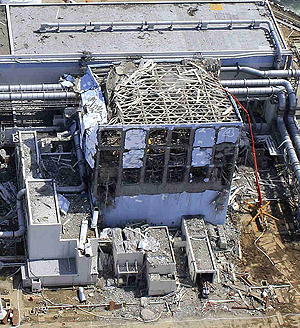|
INTO ETERNITY is a multi award-winning documentary film about long-term safety issues in nuclear energy production. The film is set at ‘Onkalo’ the world’s first permanent storage site for nuclear waste, which is under construction in Finland. However, all countries with nuclear energy facilities have to deal with nuclear waste for at least 100 000 years. With the Fukushima disaster, Japan now has additional nuclear waste. Onkalo is an underground facility, but Fukushima is above ground, vulnerable to natural disasters, war, and economic crisis. The reactors, that suffered full or partial meltdown, will have to be permanently controlled and maintained for millennia on end. The radioactive evacuation zone is now uninhabitable. It has become a blind spot in the middle of Japan, a symbol of the dangers of blindness in thinking about safety. We cannot secure ourselves against things we cannot – or will not – see. |
|
INTO ETERNITY
Fukushima was not a natural disaster,
but a result of human error and mental meltdown! The Fukushima disaster is a result of human error – or even worse – of conscious human negligence. Everybody knew, that there would be earthquakes and tsunamis in the area, and security measures had been taken – except not adequate measures. The tsunami wall was too low. This is a result of two major factors, which are in fact perhaps the biggest risks in nuclear energy security:
Was the disaster in Japan preceded by a kind of mental meltdown in the political arena? Many incidents and ‘near disasters’ have happened in nuclear facilities all over Japan since the 1980‘s, but they have largely been kept secret from the public. Such attitude can only be aimed at maintaining a sense of security, but it is a false security and as such it prevents re-evaluation, considerations, and improvements in security. Why e.g. were warnings about the height of the tsunami wall at Fukushima never acted upon? And is this kind of ‘culture of secrecy’, that aims at making people feel confident about nuclear energy without questioning security, limited to Japan? The Richter scale for human error is open–ended. “Into Eternity” deals with the inherently, unfathomable time-span of 100 000 years, which is how long the waste will remain a threat to all life, and consequently how long the facility must remain safe. This raises questions, that go beyond our previous human experience, and which are seldom part of the debate. Nuclear energy is often portrayed as the “morally correct” choice of energy due to its lack of CO2 emissions, while long-term ethical and existential implications are widely ignored, because our considerations with regards to energy are based on a technological conviction, that we can solve all problems: what we do not know today, we will know tomorrow. If we look at human history, the only constant seems to be that of change. During the next 100 000 years our Civilization will cease to exist, and the understanding of radiation, which our senses are unable to detect, may disappear. For this reason, ONKALO – which means hiding place in Finnish – is built to be able to operate without any human intervention, and the preferred safety-strategy at the moment is to let the waste facility sink into oblivion, hoping that it will never be rediscovered. If so, ONKALO is not a technological challenge – although building something destined to last 100 000 years has never been attempted before – the real threat is human curiosity. How do we prevent people from wondering what it is and entering the facility? Who knows how future man will behave in 1 000; 10 000; or 100 000 years? Can we plan for things we are unable to imagine? How do we warn future man? Will he understand our warnings, and if so, will he respect them? Is it possible, that someone in posterity will consider our repository a monument to a hitherto unknown inhumanity? Are we at present committing a crime against humanity in the future? Michael Madsen, Director of ‘Into Eternity‘ |





